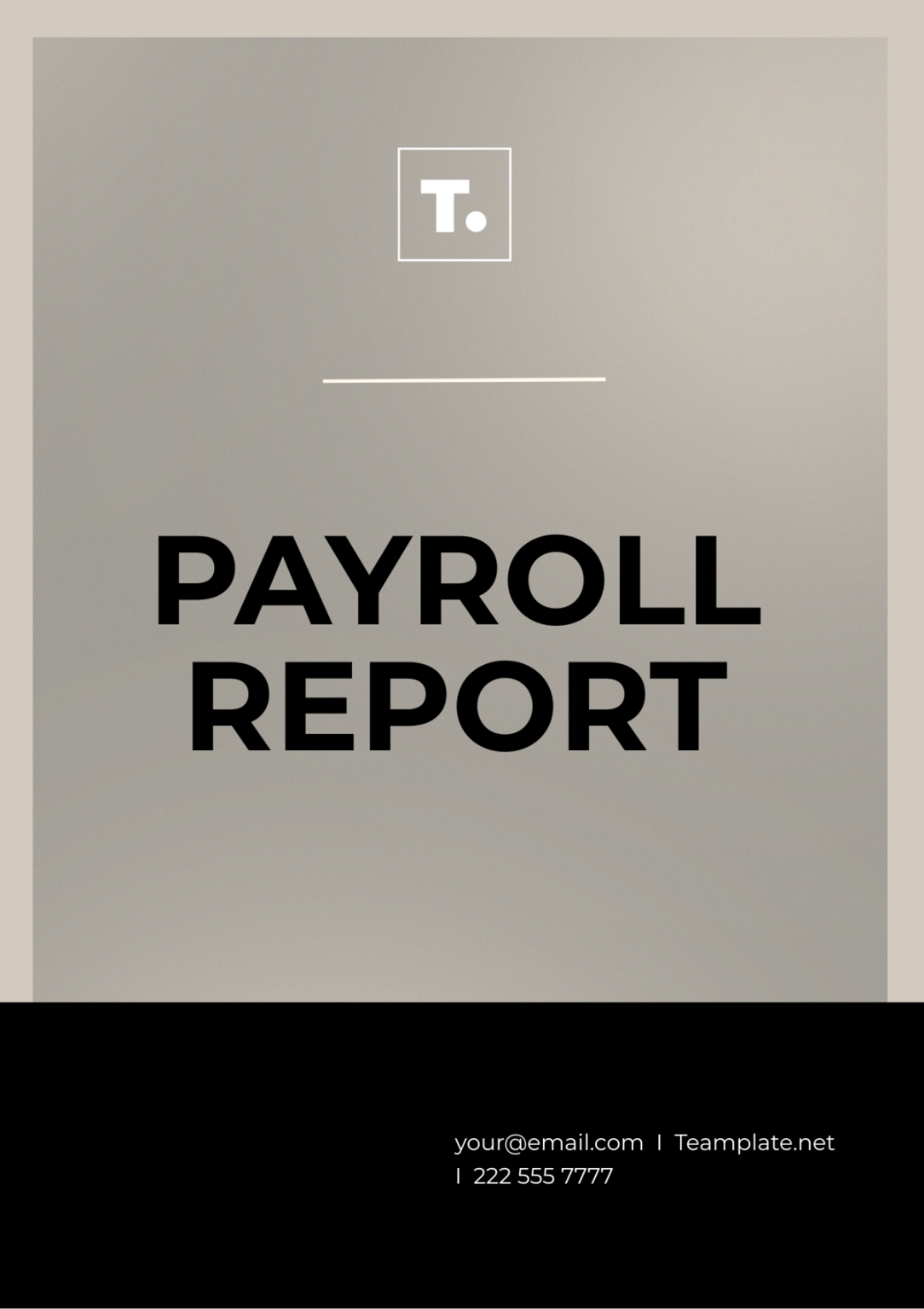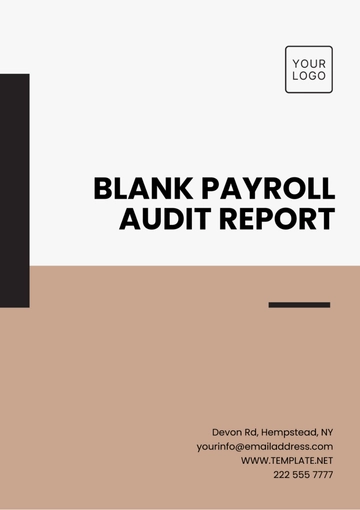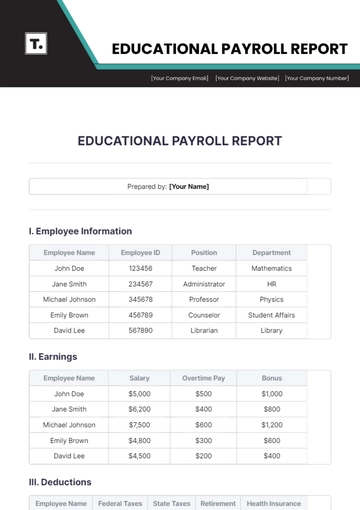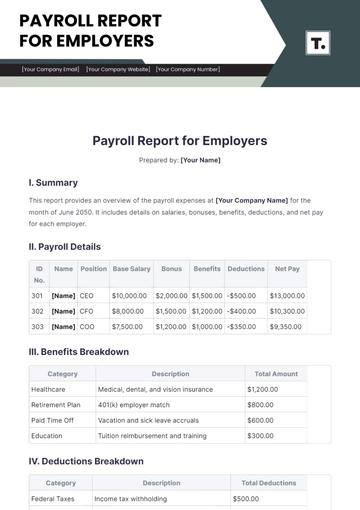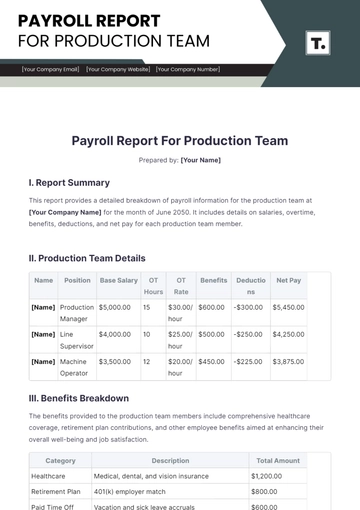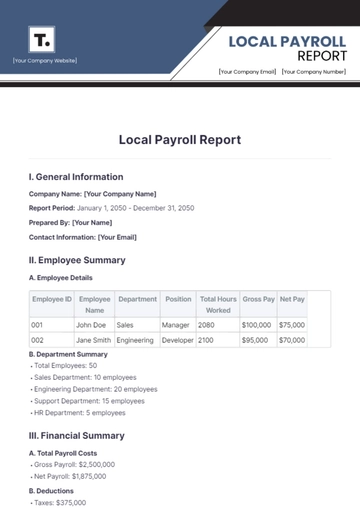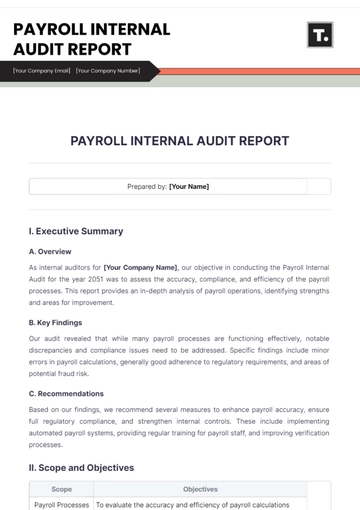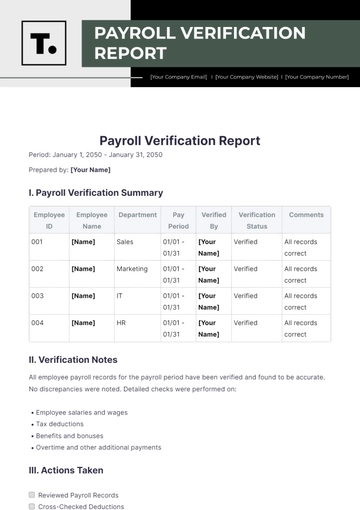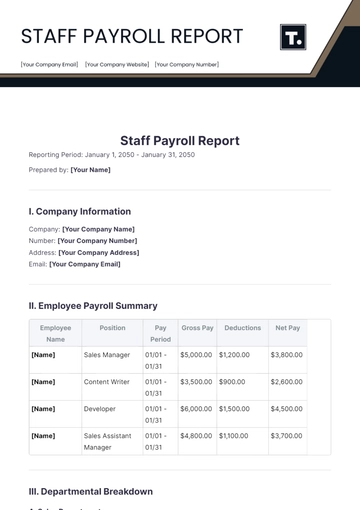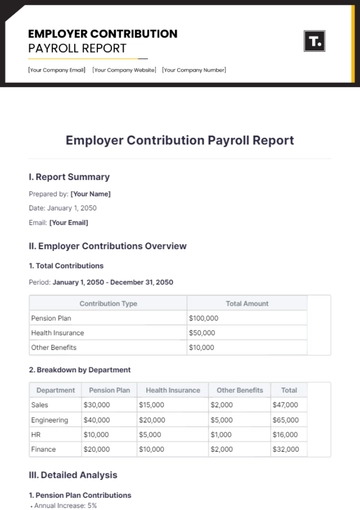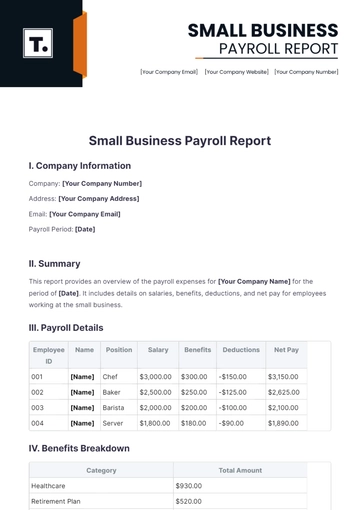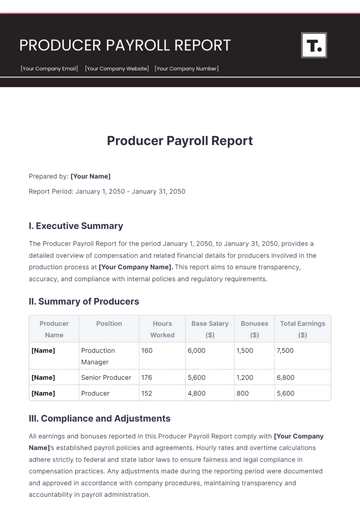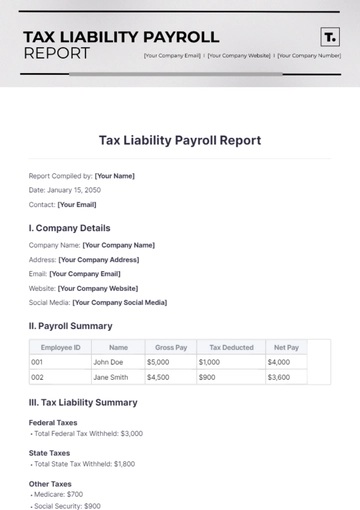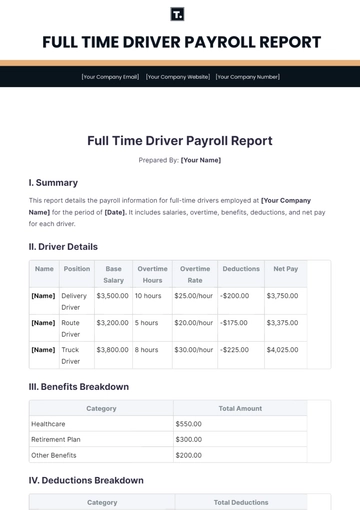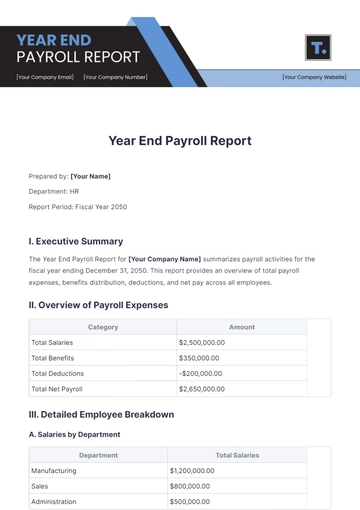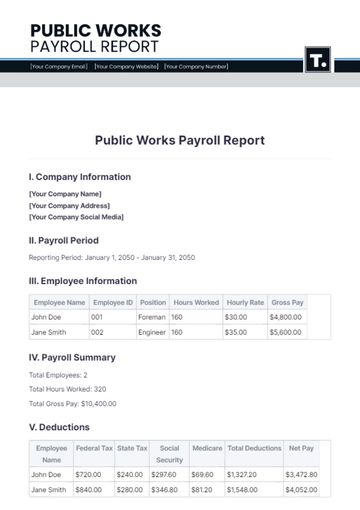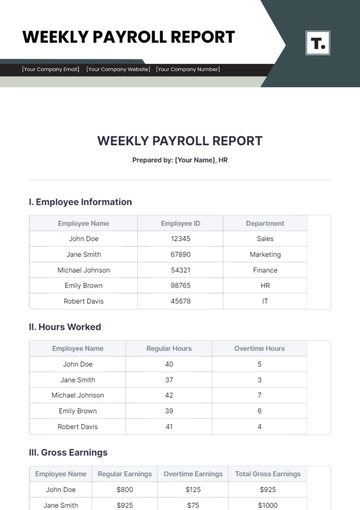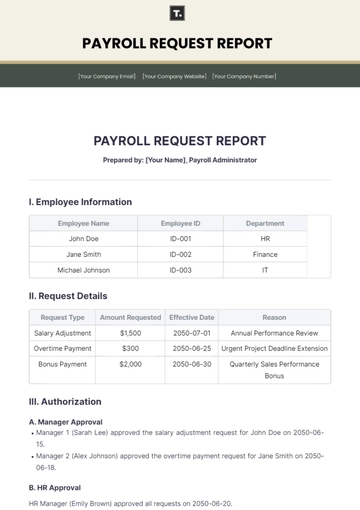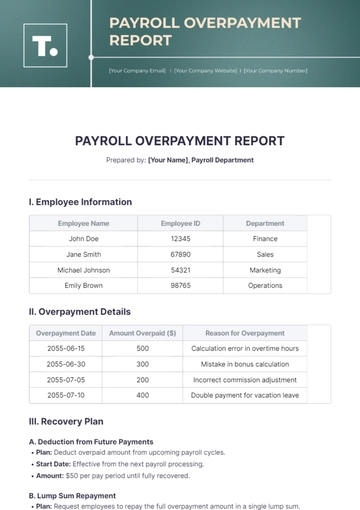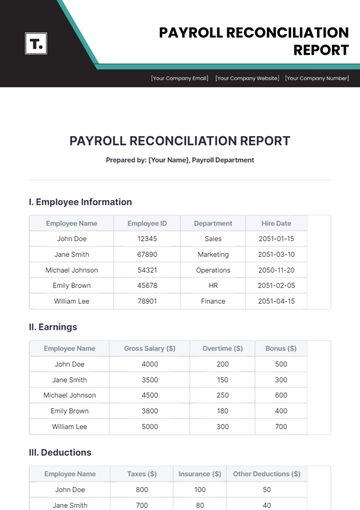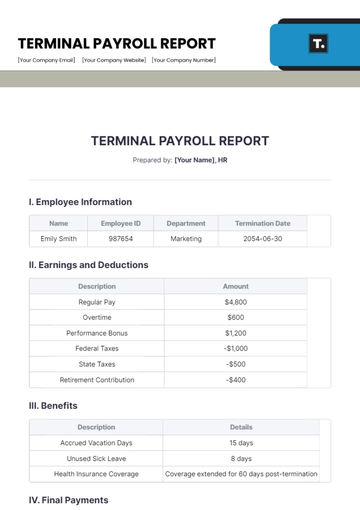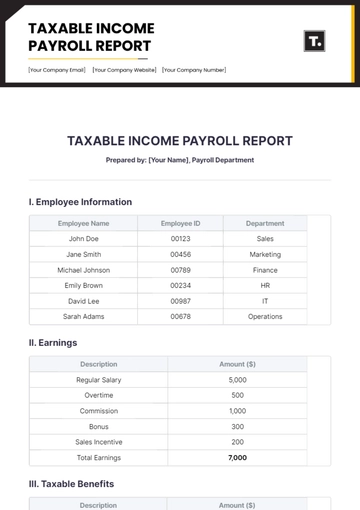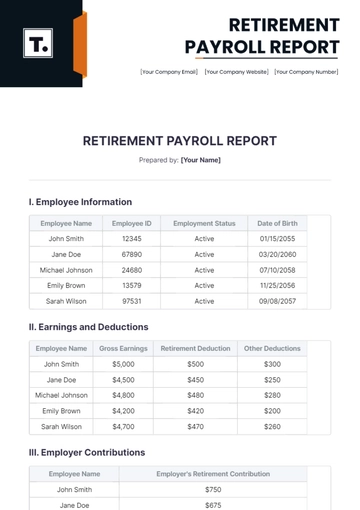Payroll Report
Prepared by: [YOUR NAME]
Company: [YOUR COMPANY NAME]
Date: [DATE]
Report Period: [START DATE] to [END DATE]
I. Employee Information
Employee ID | Employee Name | Job Title | Department |
|---|
E001 | [Name] | Software Engineer | IT |
E002 | [Name] | Project Manager | Operations |
E003 | [Name] | HR Specialist | Human Resources |
II. Earnings
Employee ID | Basic Salary | Overtime Pay | Bonuses | Total Earnings |
|---|
E001 | $5,000 | $500 | $200 | $5,700 |
E002 | $6,000 | $600 | $300 | $6,900 |
E003 | $4,500 | $450 | $150 | $5,100 |
III. Deductions
Employee ID | Federal Tax | State Tax | Social Security | Health Insurance | Other Deductions | Total Deductions |
|---|
E001 | $600 | $300 | $250 | $150 | $50 | $1,350 |
E002 | $700 | $350 | $300 | $200 | $75 | $1,625 |
E003 | $500 | $250 | $225 | $100 | $50 | $1,125 |
IV. Net Pay
Employee ID | Total Earnings | Total Deductions | Net Pay |
|---|
E001 | $5,700 | $1,350 | $4,350 |
E002 | $6,900 | $1,625 | $5,275 |
E003 | $5,100 | $1,125 | $3,975 |
V. Employer Contributions
Employee ID | 401(k) Match | Health Insurance | Total Employer Contributions |
|---|
E001 | $200 | $150 | $350 |
E002 | $250 | $200 | $450 |
E003 | $180 | $100 | $280 |
VI. Summary Totals
VII. Notes
All amounts are in USD.
This report includes payroll data for the specified period and is intended for internal use only.
For any questions or clarifications, please contact the HR Department.
Prepared by:

[Your Name]
HR Manager
Report Templates @ Template.net
